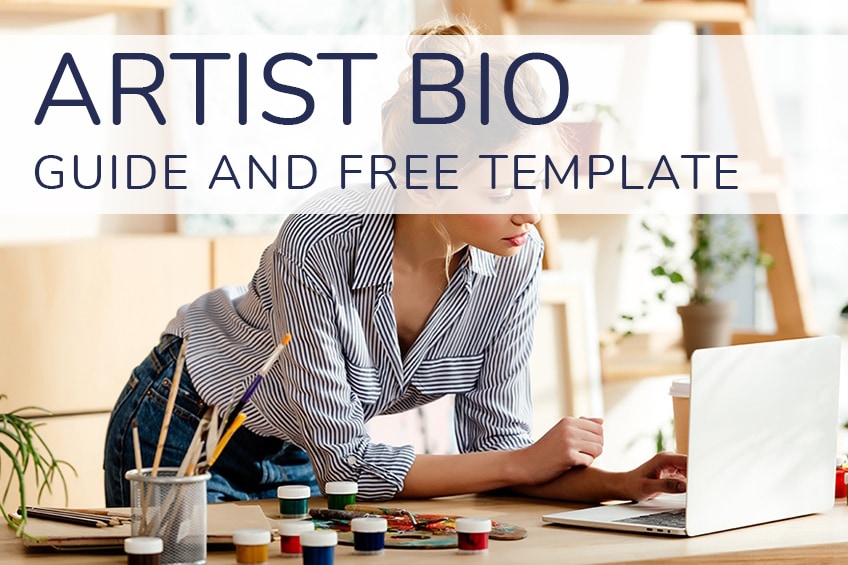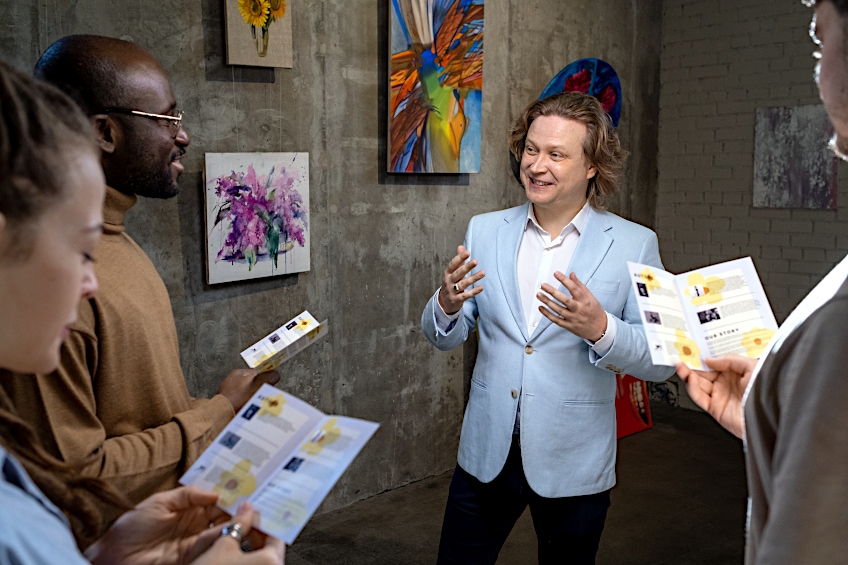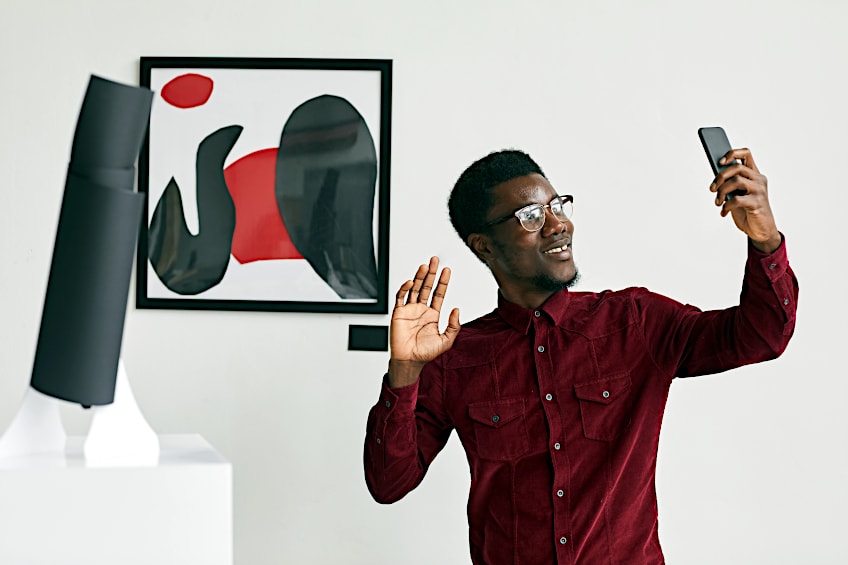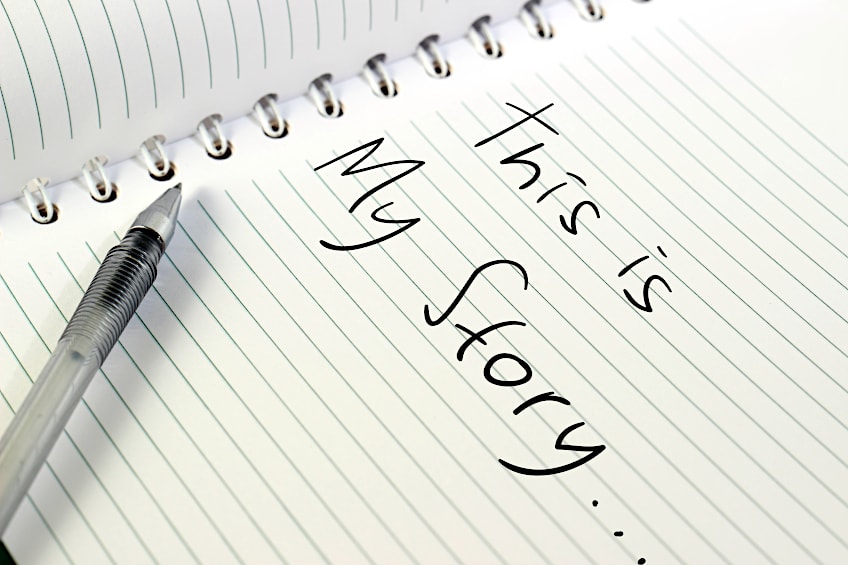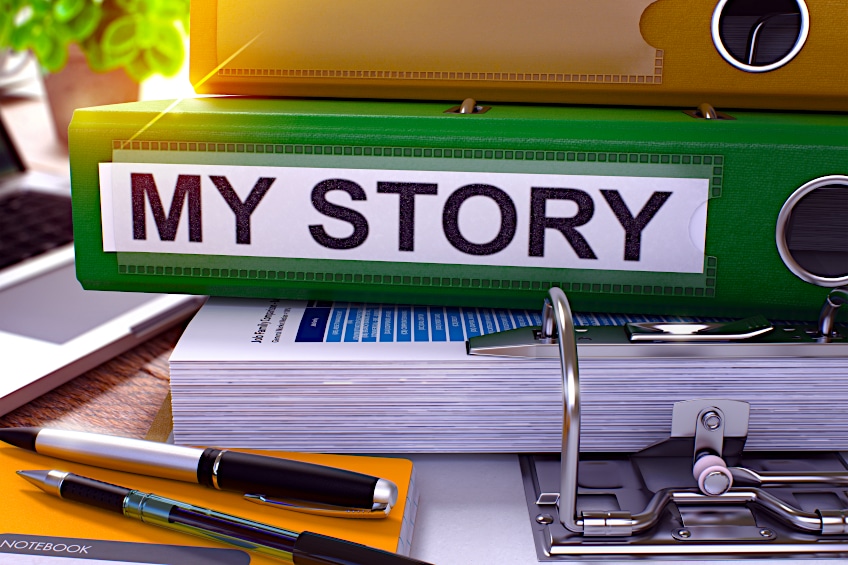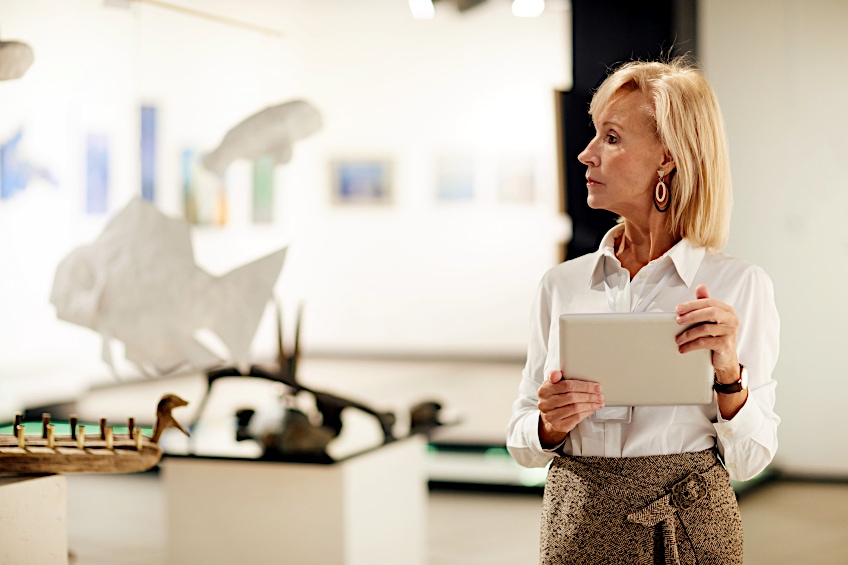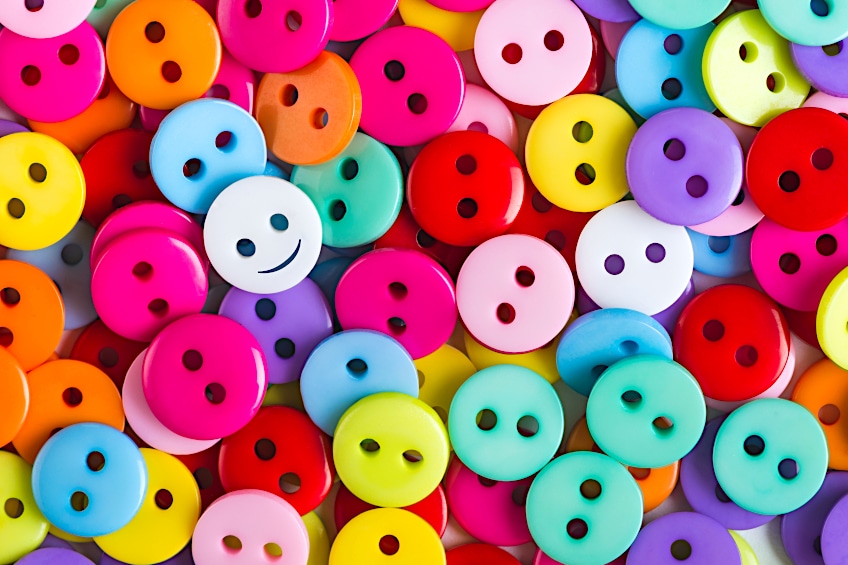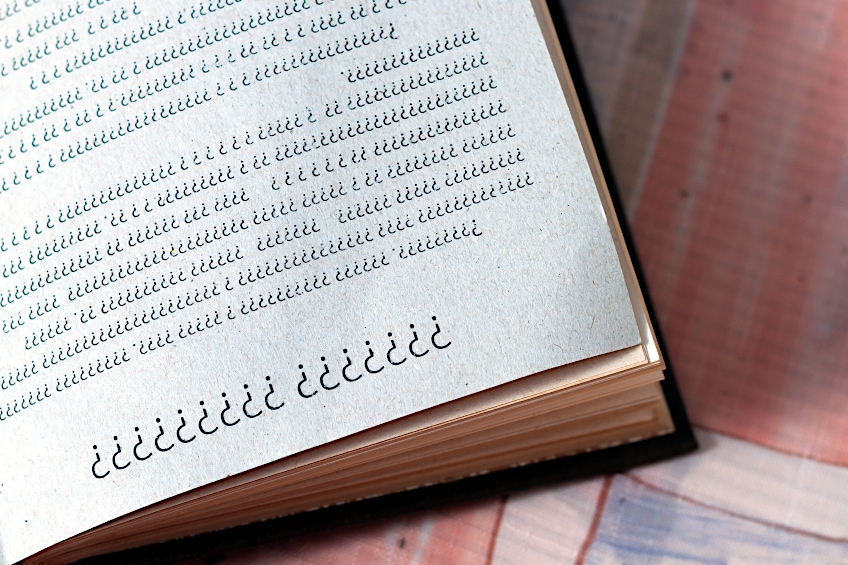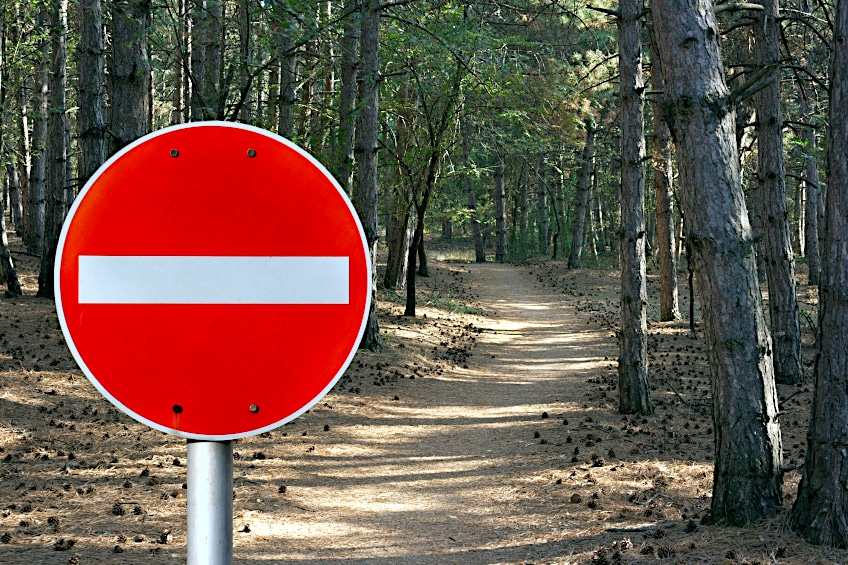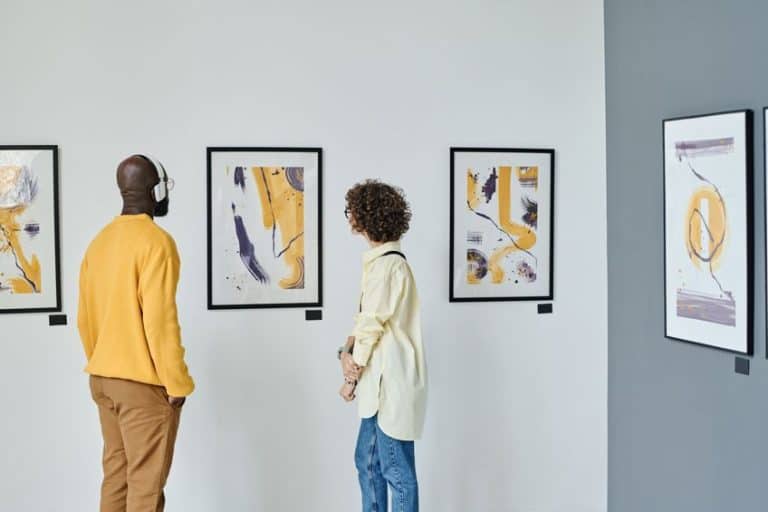How to Write an Artist Bio – Background Information Writing Tips
Writing an artist biography (shortened as artist bio) is often associated with the less fun, administrative side of practicing art. However, writing an artist bio can be a stimulating exercise that leads to clarity and more opportunities. In this article, we will look at what an artist biography is, what to include in an artist bio, and some artist bio examples to ultimately understand how to write an artist bio.
How to Write an Artist Bio
Making art is the most important part of being an artist, but often communicating what they do to the world is neglected by artists. Your practice and artworks might make sense to you, but you cannot assume everyone will understand them simply by looking at them. Generating support materials that essentially “translate” your artworks into clear text for viewers to read is just as important as making the art itself.
Support materials include your website, artist CV, artist biography, artist statement, business cards, and elevator speech.
Many artists are not sure how to write an artist bio and therefore avoid doing so altogether. This can lead to a scramble just before a deadline, or the generation of an unclear and incomplete text. If you see writing your artist bio as an exercise in defining how you want to present yourself to the world, it can be a fun and enlightening exercise.
What Is an Artist Biography?
Artists often confuse an artist bio with an artist statement. An artist statement provides conceptual reasoning that explains the concepts, symbols, subjects, and methods of the work you create. It goes into a detailed rationale of why and how your work is created. An artist statement can be specific to a certain exhibition or body of work or be a general statement about your art practice.
An artist biography is a summary of the artist’s life and career. It gives a clear and brief account of what the artist has achieved in their career up to the present moment, the mediums, and communities they work in as well as any other experiences relevant to their body of work. In an artist bio, you can introduce the main themes of your work, but reserve the conceptual explanations for your artist statement.
Artist bios are often included in exhibitions, competitions, funding, collection texts, and so on. Individuals working in the film, music, literature, theater, poetry, and fine arts industries have to have an artist bio, as it is often required as part of submissions to qualify for opportunities to show your work. If you are marketing on social media, on your website, or doing self-organized exhibitions, it is also good to have a bio available for buyers and viewers to read about who you are and what you have done.
An artist bio can create a personal connection between you and the viewer of your work. It should be a punchy, compact text that is easy to read and straight to the point. That being said, the beginning or ending sentence of your bio can include some of your artist values to express the philosophy behind your art practice. Again, avoid expanding too much on these subjects and rather explore them further in your artist statements.
Your artist bio can also be tailored for specific use. For example, you might want the bio on your website to be more extensive and personal, whereas a bio submitted for a museum might focus on a specific era of your career relevant to the works on display.
What to Include in an Artist Bio
There are many ways to write an artist bio. A traditional approach would be a professional, academically styled, summarized CV, but this does not mean that it is the only “correct” way to write an artist bio. You can style your bio to reflect your artist personality and style of working.
It is a great idea to write a long and short version of your artist bio. Cap the short version at 250 to 300 words, as many submissions limit the word count. A more extensive bio is good to have at hand for publications, articles, and your website.
A professional artist bio that is submitted for open calls and publication is written in the third person. When writing your artist bio, you have to use your name and surname in the first sentence. From there, you can decide if you want to use your first name or last name to refer to yourself in the text (see the example bios below for reference). If you want your artist bio to be more personal on your website, you can write it in the first person.
Your bio should include where you were born, where and what you studied, where you are based or work from, what mediums you practice in as well as the general subject your artworks address. Including these elements in the introductory paragraph of your bio is a good way to give the reader a general understanding of your background and who you are as an artist.
Think of your bio as a longhand version of your CV. It should therefore include any exhibitions you were part of, competitions you won, residencies you attended, the funding you received, and any other relevant art achievements throughout your career. If you have been practicing for a long time or have been part of many shows and events, choose the most esteemed achievements to include in your artist bio.
Remember to include the associated institutions, galleries, and persons in each listed achievement. This adds professional credibility to your work. It also acts as a reference so that the panel or judges reading your bio can follow up with said institutions or galleries to find out how it was working with you.
What Is an Artist Bio Example?
Artists approach biographies in different ways. It is a good idea to read as many artist biographies as possible before deciding on what style you want to use. You can google famous artists’ bios or read the printed text at exhibitions you attend.
Example One: Short Artist Biography
[Artist Name] is a South African multi-media artist, working primarily in oil paint and performance art. She received her BA (Visual Arts) from Stellenbosch University in 2017. In 2018, [Artist Name] showed in Masan, South Korea as part of the Rhizome Artist Residency. She was selected to take part in the 2019 ICA Live Art Workshop, receiving training from art experts from all around the world. In 2019, [Artist Name] opened her first solo exhibition of paintings titled, Painted Mantras, at GUS Gallery and facilitated a group collaboration project titled, Take Flight, selected to be part of Infecting the City Live Art Festival.In 2020, [Artist Name] created a series of ZOOM performances with Lumkile Mzayiya called Evoked? These performances led her to create exclusive performances from her home in 2021 to accommodate the mid-pandemic audience. She also started focusing more on the sustainability of creative practices in the last three years and now offers creative coaching sessions to artists of all kinds. By sharing what she has learned from a 10-year practice, [Artist Name] hopes to relay more directly the sense of vulnerability with which she makes art and the core belief of her practice: Art is an immensely important and powerful bridge of communication that can offer understanding, healing, and connection.
Example Two: Extended Artist Biography
[Artist Name] is a visual artist living and working in Cape Town. She received her BA (Visual Arts) from Stellenbosch University in 2017. [Artist Name] creates primarily in oil paint, installation, and performance art. Her work looks at questions around identity, how we remember individually and collectively and how art can aid in processes of healing and connection.As part of the Rhizome Artist Residency in 2018, [Artist Name] further explored the theme of public memory and identity. In collaboration with Korean artists, she improvised spontaneous engagements with the audience led to questions around race, voice, violence, and identity, which she continued to unpack after completing the 10-month residency.
[Artist Name] was selected to attend a series of Live Art workshops facilitated by a selection of esteemed international practitioners and educators at the ICA (Institute of Creative Arts) in April 2019. This three-week intensive course that looked at Live Art from the fine art, movement, sound design, light art, choreography, and theory lense, inspired [Artist Name] to start The Leap Collective (TLC) with Livia Schneider.TLC brought together a community of collaborating artists. The collective offered visual artists informal critique sessions, and emotional support and aimed to create a safe space for artists to develop together. In June and July 2019, [Artist Name] co-curated a series of immersive art events titled, Senses of the Seasons, with TLC partner Livia Schneider. These multi-sensory art happenings focused on satisfying the creative desires of young artists in the heart of Cape Town.
Painted Mantras, [Artist Name]’s first solo exhibition of paintings, showed at the University of Stellenbosch Gallery in October 2019. This exhibition formed a collection of visual mantras painted in oil on canvas.
In November 2019, [Artist Name] performed Take Flight as part of Infecting the City Live Art Festival in collaboration with Duduzile Mathebula, King Debs, Spirit Mba, and Kirsten Warries. A series of collaborative performance pieces that linked to her first public engagement during #FeesMustFall in 2016 as part of Open Forum Residency titled, Flight.
In 2020, [Artist Name] created a series of ZOOM performances with Lumkile Mzayiya called Evoked? These performances led her to create exclusive performances from her home in 2021 to accommodate the mid-pandemic audience. She also started focusing more on the sustainability of creative practices during Covid-19 by offering creative coaching sessions to artists of all kinds and she teaches painting every week from her home in Fish Hoek.
By creating complex sensory art experiences that involve the body of the viewer through taste, smell, sound, and often through the physical engagement with her artworks, [Artist Name] hopes to relay more directly the sense of vulnerability with which she makes art and the core belief to her practice: Art is an immensely important and powerful bridge of communication that can offer understanding, healing and connection.
What Exercises to Do When Writing an Artist Bio
Starting an artist bio can feel daunting, but the exercise of writing through everything you have done in your life, when you started making art, your training and why you make art can translate into more content for your website, social media, or marketing material. Here are a few exercises to start and refine your text:
What Will Make You Stand Out?
Ask yourself what will make you stand out. Your bio should be professional but should also grab the reader’s interest. Including an artist’s value, philosophy, or story about where your art practice started can help the reader connect to you.
Do a Brain Dump
A brain dump is a conscious stream of writing exercise where you leave the grammatical and editorial considerations for later. Start writing your whole story without worrying about sentence construction or if it makes sense. Write as much as possible and continue writing until you feel like you have written everything about your experience, achievements, and ways of practicing art. After you have written everything down, you can edit this rough draft into a neat and concise text.
Consider Clarity
It is important to keep your sentences short and only include the relevant achievements and training in your artist bio. Make sure these achievements are listed chronologically and that you have included who trained you or granted you the opportunity. Cut unnecessary facts about your life and keep the text specific to you as an artist. This is where writing a shortened version of your bio can be a good exercise, as you will have to consider the essence of what you want to communicate and get straight to the point.
Ask a Friend to Proofread Your Final Text
Ask a friend that knows you well and is good at writing to read your first draft. You can exchange a small artwork, take them for lunch or help them write their bio as well for this service they provide. Often getting an outside perspective can bring insight into what you might have to add but did not.
What Should I Avoid When Writing an Artist Bio?
Conceptual thinking and physically making something mostly come easier to artists than the administrative side of practicing art. This makes framing yourself and communicating what you do to the world hard as artmaking is often informed by the abstract and metaphorical part of the brain. Make sure your bio makes sense and is professional. Avoid using abstract and metaphorical language, as this kind of writing is reserved for conceptual reasonings or exhibition texts.
Make sure you do not get hung up on being too formal or trying to sound smart. It is important that your bio is authentic, factual, and reflects who you are as an artist. You do not have to impress readers with art history or lengthy words.
Most people just expect to read about who you are and what you have done in your artist bio. Do not include opportunities you applied for but did not get.
Choose a font and style that is easy to read and professional. A bio is not where you assert your brand identity but rather a professional text that should be easily navigated. You can always design exhibition flyers to reflect your personal brand, but make sure your general bio adheres to an acceptable style for any opportunity.
Artists often write one bio at the beginning of their career and then forget to update it. Your bio should be updated at least every six months. If you are selected for a big opportunity, immediately add it to your bio so you do not forget in the future or submit an outdated text for new opportunities.
Writing an artist bio is a necessary step in creating a professional art practice. It should be a considered and clear text that reflects all the wonderful things you have done up until the present moment in your career. The administrative side and how well you manage it is often what makes or breaks an artist, so be sure to invest focused time and research in writing your artist bio.
Frequently Asked Questions
What Is an Artist Bio?
Your bio should be a shortened, written-out version of your resumé. It is part of the support materials for an artist’s work, just like your website, business cards, and exhibition statements. It is a piece of text that accompanies an artist’s work so the viewer can understand who made the work and what they have achieved in their career.
What Should I Write in an Artist Bio?
There is often confusion as to what to include in an artist bio, but there are a few essential elements. You should start with your name, where you are from, and the mediums you work with. Include your training, exhibitions, and any other art achievements you have attained in your career thus far. Prioritize the achievements associated with the most esteemed establishments and take out any exhibitions or events that have become irrelevant to your practice when you update your bio every six months.
Why Is an Artist Bio Important?
Without an artist bio, the viewers of your work will not know who you are, why you practice, or what you have achieved. You cannot assume that everyone will read your resume. This is where a short artist bio is helpful, as it is supposed to be an engaging text that shares all of your most important achievements with those interested in your work.
Nicolene Burger is a South African multi-media artist, working primarily in oil paint and performance art. She received her BA (Visual Arts) from Stellenbosch University in 2017. In 2018, Burger showed in Masan, South Korea as part of the Rhizome Artist Residency. She was selected to take part in the 2019 ICA Live Art Workshop, receiving training from art experts all around the world. In 2019 Burger opened her first solo exhibition of paintings titled, Painted Mantras, at GUS Gallery and facilitated a group collaboration project titled, Take Flight, selected to be part of Infecting the City Live Art Festival. At the moment, Nicolene is completing a practice-based master’s degree in Theatre and Performance at the University of Cape Town.
In 2020, Nicolene created a series of ZOOM performances with Lumkile Mzayiya called, Evoked?. These performances led her to create exclusive performances from her home in 2021 to accommodate the mid-pandemic audience. She also started focusing more on the sustainability of creative practices in the last 3 years and now offers creative coaching sessions to artists of all kinds. By sharing what she has learned from a 10-year practice, Burger hopes to relay more directly the sense of vulnerability with which she makes art and the core belief to her practice: Art is an immensely important and powerful bridge of communication that can offer understanding, healing and connection.
Nicolene writes our blog posts on art history with an emphasis on renowned artists and contemporary art. She also writes in the field of art industry. Her extensive artistic background and her studies in Fine and Studio Arts contribute to her expertise in the field.
Learn more about Nicolene Burger and the Art in Context Team.
Cite this Article
Nicolene, Burger, “How to Write an Artist Bio – Background Information Writing Tips.” Art in Context. September 4, 2022. URL: https://artincontext.org/how-to-write-an-artist-bio/
Burger, N. (2022, 4 September). How to Write an Artist Bio – Background Information Writing Tips. Art in Context. https://artincontext.org/how-to-write-an-artist-bio/
Burger, Nicolene. “How to Write an Artist Bio – Background Information Writing Tips.” Art in Context, September 4, 2022. https://artincontext.org/how-to-write-an-artist-bio/.


